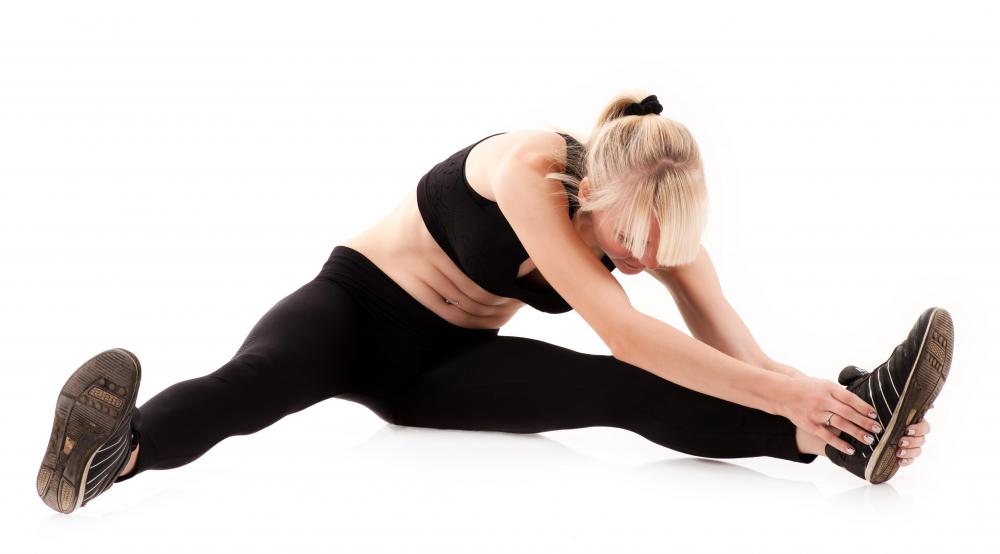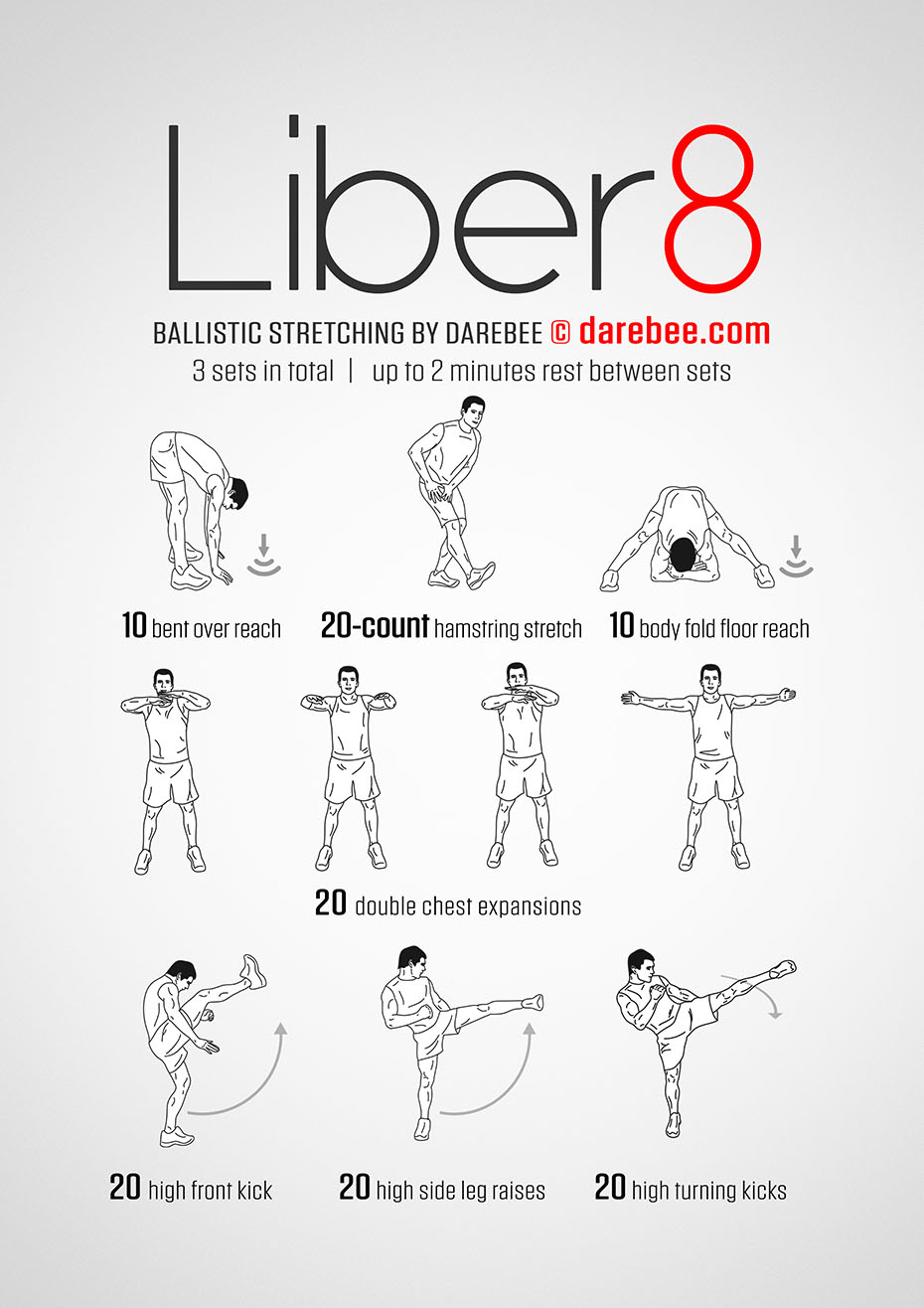what is ballistic stretching
 Ballistic Stretching: Should You Do It Before Exercise?
Ballistic Stretching: Should You Do It Before Exercise?3 Main types of Silence Stretch Mar 2, 2018 Silence We all know, or at least have heard, about the importance of stretching. Whether to improve your sports performance, general health and well-being, or to relieve pain and tension, stretching can be the answer. The real question is what kind of stretch we should be doing to get the best results. When it comes to stretching, there are three main techniques: static, dynamic and ballistic stretching. Static stretching is what usually comes to mind when talking about stretching. It is a form of active or passive stretch in which it maintains a position for about 30-60 seconds, allowing muscles and connective tissues, fascia, to lengthen. This is the best known style of stretching and has been seen as the status quo for years. This stretching style may not be the best way to improve performance before physical activity. Using a static stretching program before dedicating to physical activity can inhibit the ability of the muscle to shoot properly. The main reason for this is a reduction in muscle tension and an increase in the length between the rest of muscle fibers. These two factors alter the length-tension ratio of the muscle, causing a decrease in muscle excitability. This in turn can directly affect the muscle's ability to function optimally. Think of the tension in a rubber band. When you stretch a rubber band and hold that tension for a long period of time, you make the rubber band increase in length but you lose the energy stored. The tension of the band is what allows the band to be functional. Our bodies rely on similar forces to drive us during a race, or allow us to jump high during a sport like basketball. If we exaggerate our muscles, this inhibits elasticity, which inhibits our performance. Dynamic stretching is an active form of stretching that is done by involving the desired muscle antagonist through the range of movement of the joint, just keeping the stretch for 2-3 seconds. Because stretching is only briefly maintained, the muscle is able to increase length without a reduction in muscle tension or muscle excitability. By preventing muscle stress reduction, an individual can improve his or her range of motion without losing the production of strength. Dynamic stretching is the style used by therapists in LYMBR. This type of stretch is also known as a dynamic warming, which athletes use to prepare their muscles for the rigorous demands of their sport. Ballistic stretching is the most controversial form of stretching. Unlike dynamic stretching, ballistic stretching uses muscle activation through fast and shy movements. This inhibits the reflection of the stretching of the body and increases the range of movement of the muscle through the force created by the rebound. The extra external force produced can overload the muscle, increasing the risk of potential injury. Because the high risk of injury does not exceed the benefits of stretching, most fitness professionals do not recommend using this stretching style. Looking at the three different styles of stretching, we can see that all can be used to increase the range of motion. Static stretching is the best known style and is commonly used for general stretching, but it can inhibit muscle excitability, so it is not attractive for people active in fitness and athleticism. Dynamic stretching increases the range of movement while maintaining muscle tension, making it useful for general stretching, fitness enthusiasts and athletes. Ballistic stretching can increase the range of movement quickly, but it has a higher risk of injury than other effective techniques. We all know that we should stretch – stretching safely and effectively will help you achieve your health and well-being goals. In our next post, we will expand our patented dynamic stretching form called Progressive Dynamic Stretching. Written by Rick Charron. Rick is a Stretch therapist and manager of our studio Newton, MA. Submit a Comment Your email address will not be published. Required fields are marked *Comment Name * Email * Website Save my name, email and website in this browser for the next time you comment. Recent PublicationsArchives

Ballistic Stretching: Is It Safe? | Healthline

Top 7 Benefits of Ballistic Stretching

Ballistic Stretching - Tips for Practicing Ballistic Training Safely | Stretches for flexibility, Dynamic stretching, Exercise

Ballistic – HSC PDHPE

Ballistic stretching types, disadvantages & how ballistic stretching is done,

8 BALLISTIC STRETCHING EXAMPLES & EXERCISES • JV Flexibility

Why pros say you should never do ballistic stretches | Well+Good

8 BALLISTIC STRETCHING EXAMPLES & EXERCISES • JV Flexibility

Ballistic Stretching

What is Ballistic Stretching? (with pictures)
Ballistic Stretching Workout and What are its Various Benefits ?
Dynamic vs. Ballistic Stretching - ASFA
All About Ballistic Stretching

PNF, dynamic or static stretching - which is best for athletes?
/GettyImages-585905905-5a9242ec119fa8003732aee5.jpg)
Static vs. Ballistic Stretching

4 ballistic stretching exercises to improve body flexibility

Liber8 Workout

What Is Ballistic Stretching and How Can It Benefit You? - 9INE POINT

Top 7 Benefits of Ballistic Stretching

Chapter 12Flexibility. Key Concepts ballistic stretching contract-relax (CR) contract-relax with agonist-contraction (CRAC)contract-relax with agonist-contraction. - ppt download

4 Ballistic Stretching Examples To Use In Your Flexibility Routine. • JV Flexibility

What are ballistic stretches? |

Pin on Fitness

Static Stretching vs. Ballistic Stretching - Fit People
Stretching – Safe in Dance International

How Ballistic Stretching can Change your Life

Ballistic Stretching | Fitness 19 Gyms

Passive Stretching: Benefits, Examples, and More

Pilates improves flexibility through its dynamic and static stretching exercises - The Pilates Works
Scooper - Africa Lifestyle News: Ballistic Stretching and Why Not Safe For You -Expert's Take

8 BALLISTIC STRETCHING EXAMPLES & EXERCISES • JV Flexibility
Everything about Ballistic Stretching | Stretchify.com

The Art Of Being Stretch Savvy - FitUpp | Exercise, Stay in shape, Stretching exercises
The Dangers of Ballistic Stretching - ASFA

Flexibility Training - GCSE PE - Revision World

8 BALLISTIC STRETCHING EXAMPLES & EXERCISES • JV Flexibility

What Are The Different Types of Stretching? | Benefits of Stretching

The Benefits of Ballistic Stretching - React

Stretches for Exercising. The Differences between Static, Dynamic… | by Johnathan Bradley | Medium

Advantages and Disadvantages of Ballistic Stretching - Fitness Vigil
Posting Komentar untuk "what is ballistic stretching"